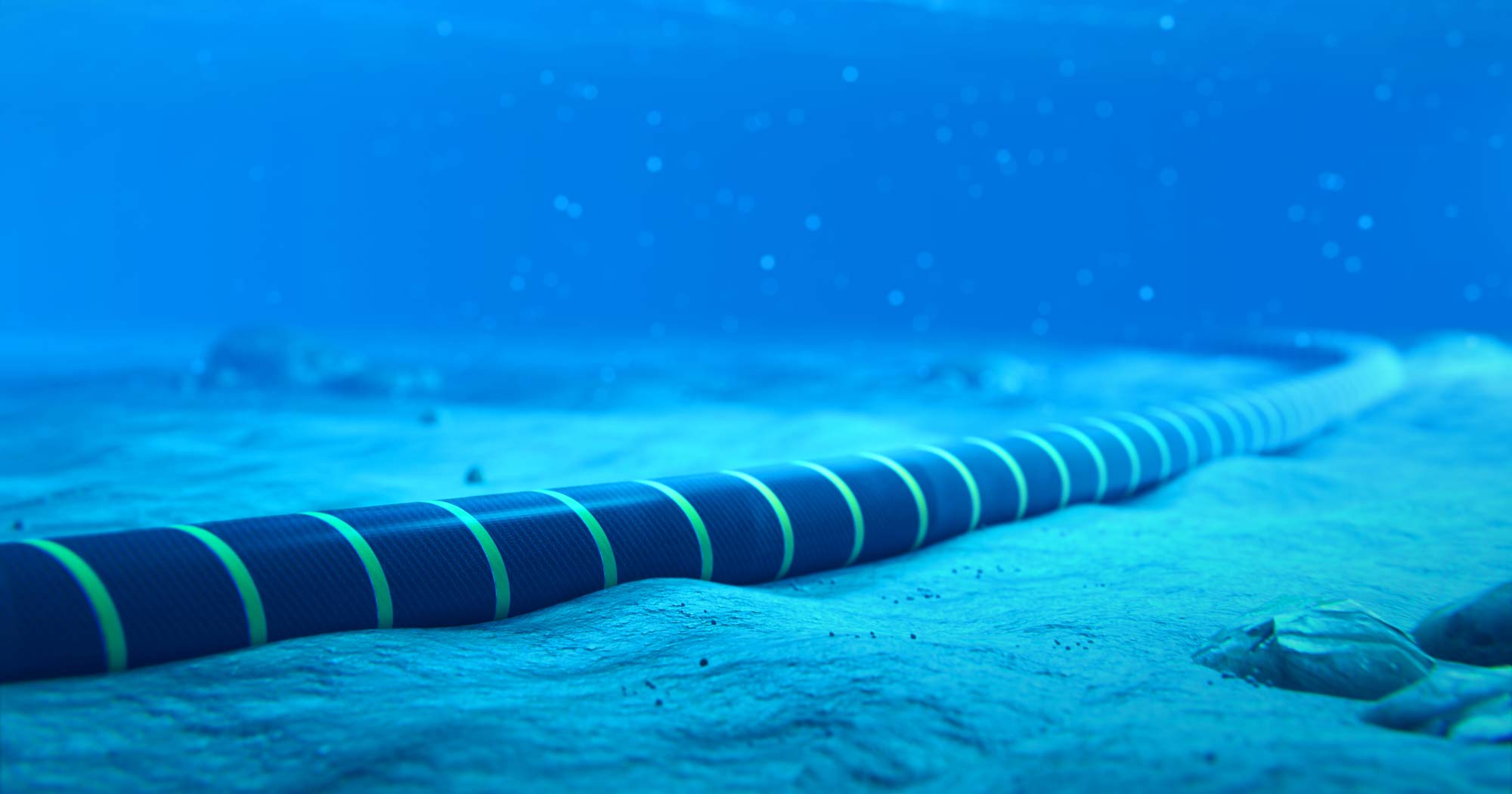TSO quartet moving forward with €3.5 billion subsea cable link between four countries to bring green energy to Europe

With energy security becoming increasingly entangled in geopolitical tensions, fears continue to grow about the dangers that lie in wait, as countries seek new ways to strengthen and diversify their energy mix while also pursuing decarbonization. To this end, four transmission system operators (TSOs) have pooled resources to create a joint venture (JV) company that will bring a subsea cable link between Azerbaijan, Romania, Georgia, and Hungary to life for a price tag of €3.5 billion, sending renewable electricity from the South Caucasus region straight to Europe’s waiting arms.
Romania’s power grid operator Transelectrica, Azerbaijan’s Azerenerji, Georgian State Electrosystem (GSE), and Hungary’s MVM have inked a JV deal to establish the Green Energy Corridor power company to deliver the Black Sea Energy subsea cable project, which could cost up to €3.5 billion to unleash green energy from Georgia to Europe, according to Sebastian Burduja, Romanian Energy Minister.
“The more routes we have, the more sources we have, the cheaper energy will become. The fact that the European states in our region will have access to energy from a totally different market like the one in the Caucasus will certainly lead to diversification of supply and cheaper energy,” highlighted Burduja.
The four countries originally signed an agreement in Bucharest on December 17, 2022, for a strategic partnership, which entailed the construction of an energy bridge from the Caucasus region to Europe. This green electricity project involves laying a 1,195 km Black Sea Energy subsea power cable with a capacity of 1 GW, which could power roughly 1 million homes in Europe. The decision to let Bulgaria join the project came in June 2023.
Almost a year later, the four TSOs signed a memorandum to set up a joint operating company for the project that would take three or four years to complete cable laying operations. The European Commission intends to bankroll the project with €2.3 billion. The feasibility study of this subsea interconnector is set to be presented at the COP29 Climate Change Conference in Baku this November.
While Georgia’s hydropower accounts for 73% of its electricity production with the country also pursuing wind expansion of about 4 GW, Romania’s renewable power stemming mostly from hydropower and wind has surpassed 11 GW. The subsea cable project is seen as an opportunity for the Black Sea to revamp itself from an oil and gas playground into a renewable energy gateway by harnessing the green potential of the region to step up renewable energy exports to Europe.
Burduja noted: “It is not a cheap project – we will find out the costs after the feasibility study is presented to us, but we know that 3.5 billion euros are needed to build the submarine cable between Georgia and Romania, and we also know that this project will be beneficial for security energy and for the market.
“This strategic project, strongly supported by the European Commission, will contribute to strengthening national and regional energy security, increasing connectivity in the Black Sea basin, and harnessing the potential of renewable energy.”
With its government earmarking more than $2 billion for a renewable energy development boost of 33% by 2027, Azerbaijan’s Caspian Sea coastline, which is believed to be well-suited for wind resources, could create up to 7 GW of wind power. However, the country’s overall economic potential for renewables is estimated at 27 GW, comprising 3 GW of wind energy, 23 GW of solar power, 380 MW of bioenergy, and 520 MW of hydropower.
Péter Szijjártó, Hungary’s Minister of Foreign Affairs and Trade, claims that the Green Energy Corridor is approaching a “point of no return,” warning about the world’s entrance into “an age of dangers.” With energy security poised to play a crucial role in enabling national security, he wants more cooperation opportunities like the Green Energy Corridor to make Hungary’s electricity less emission-intensive and more sustainable.
Moreover, Szijjártó underlines the government’s duty to ensure a secure and stable energy supply while paying attention to protecting the environment. Hungary’s minister is convinced that solar energy capacities should be developed while reminding that the European country’s combined solar park capacity rose eightfold to 6.7 GW over the last five years.
“The feasibility study for the subsea power cable will evaluate the possibility of adding an optical cable as well, that will connect the four countries, contributing to the improvement of data flows and supporting the digitization of the region. In addition, in the coming period we will also look at the possibility of Bulgaria joining this infrastructure project,” highlighted, Hungary’s Minister of Foreign Affairs and Trade.
From Szijjártó’s perspective, “nothing can be greener” than Azerbaijan’s wind power and Georgia’s hydropower, which this project will bring to Hungary, Romania, and perhaps Bulgaria. While Romania is constructing a new high-voltage interconnector expected to reach the Hungarian border by 2028-29, Hungary is developing the infrastructure required for such an energy link.
Following the set-up of the joint venture, the next step for the four countries is expected to be the inking of a revamped partnership agreement, which is fully aligned with European regulations. Based on a recently conducted study, the Black Sea subsea cable project is a feasible undertaking.
The countries will be connected through a submarine cable about 1,195 kilometers long with 1,100 km underwater, crossing the Black Sea between Georgia and Romania, and this cable will pass through the Economic Exclusive Zones of Türkiye and Bulgaria, however, it is designed to avoid their national water borders.
“The Black Sea submarine cable project is promising and feasible from both a technical and economic standpoint, according to the study, prepared by the Italian consulting company CESI and commissioned by the Georgian State Electrosystem with support from the World Bank and the Georgian Economy and Sustainable Development Ministry,” outlined the Georgian Economy Ministry.
While the feasibility study for the project started in 2022, the environmental and social impact assessments, alongside seabed studies, are slated for 2025-2026. Once operational, this cable link will provide green electricity generated in Azerbaijan through Georgia and the Black Sea to Romania for transportation to Hungary and other European countries, strengthening the region’s energy security.
Related
Zelenskyy reiterates call for air truce after huge Russian attack…
We need Russia to stop attacks, Zelenskyy says, backing calls for truce in air, at seaUkrainian president Volodymyr Zelenskyy has responded to overnight attacks
Europe scrambles to rearm as Trump threatens security guarantees and…
CNN — European leaders have vowed to rearm the continent at historic emergency talks h
Russia launches ‘massive’ attack on Ukraine after Europe rushes to…
Ukraine's energy and gas infrastructure came "under massive missile and drone shelling" by Russia on Friday, a Ukrainian minister said."The energy and gas infra
American severance may be averted, but Europe’s leaders must fear…
With a mixture of regret, laced with incredulity, European leaders gathered in Brussels to marshal their forces for a power struggle not with Russia, but with t












